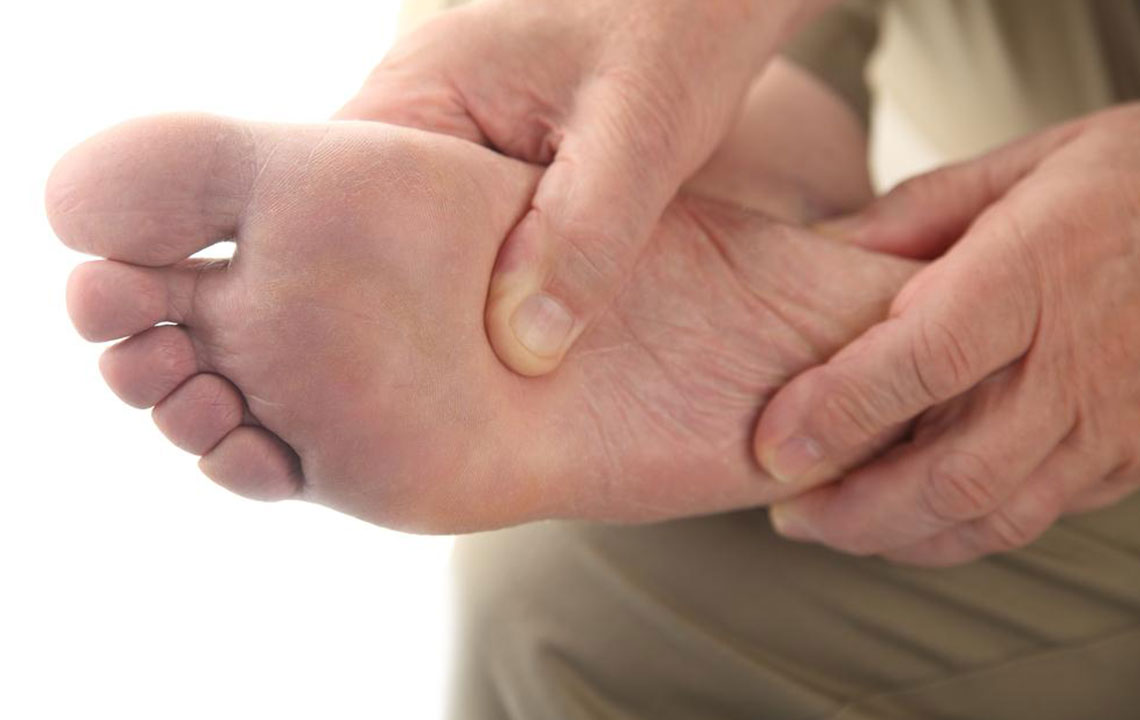Everything You Need to Know about Plantar Fasciitis
Experiencing a painful sensation in your feet becomes so often that you stop paying any heed to them. You may have realized that it is because you are walking too much or you have hurt your feet somewhere. You continue to suffer the pain without taking any precaution. This is the biggest mistake you are making as unintentionally, you could be suffering from plantar fasciitis.
Plantar fasciitis derives its name from plantar fascia, the band of connective tissue that extends from the heel and right up to the ball of your foot.

Causes of plantar fasciitis
The plantar fascia is a tissue that connects your heel bone to your toes. Excessive stress on the plantar fascia ultimately results in palter fasciitis. There various other causes of PLA
- A poor arch support, which is an effect of wearing shoes with improper arch support and/or walking barefoot
- A sudden weight gain or continuous obesity
- A sudden increase in the number of physical activities like jogging, cycling, too much walking etc.
- Weak foot and ankle muscles
- Tight calf muscles
- Onset of arthritis
- Plantar fasciitis generally hurts in three regions of your feet – the heel, the arch of your foot and the mid-foot.
Diagnosis of plantar fasciitis
There are several ways by which you or your doctor can deduce that you are indeed suffering from plantar fasciitis. They are:
A self-assessment test where you can clarify the pain yourself. If you have a dull or sharp pain in your feet that goes away after walking for 10-15 minutes, but worsen during the course of the day while climbing stairs, standing, sitting or walking for a long time, then most probably you are suffering from plantar fasciitis.
Consult your doctor and remove an X-ray of your feet. If you are suffering from plantar fasciitis, then your X-rays will show a bone spur that is a small hook-shaped bone growth on the underside of the heel.
You can visit a podiatrist who will be able to diagnose plantar fasciitis. The podiatrist will put pressure on the center of your heel and along the plantar fascia tissue, to check for any pain that you may be observing. A long time bearer of this condition will feel stinging pain when the heel is squeezed side to side.
If you are feeling any pain in your feet that doesn’t just go away, then consult a doctor immediately as plantar fasciitis doesn’t heal in itself. If it gets bad, day by day, and sometime later, walking would become difficult for you.
Treatment and prevention of plantar fasciitis
Plantar fasciitis can be treated and prevented by taking some very simple measures. All these treatments are shoe based and they are as follows:
- Wear shoes with a stable arch support.
- Your shoes should have a wide shock-absorbing heel base.
- The shoe should also have a cushioning on the front part.
- Use hoe inserts or plantar fasciitis inserts.
What are plantar fasciitis inserts?
Plantar fasciitis inserts or shoe inserts are an orthopedic device that can relieve your plantar fascia from any stretch and stress when you are walking or standing. This device is available with or without any prescription. They are also available in plastic, rubber and felt pads.
How do plantar fasciitis inserts work?
Plantar fasciitis inserts are the only non-surgical option for treating advanced stages of plantar fasciitis. They work to provide support to the plantar fascia. An insert helps by:
Providing a soft arch support and by cupping your heels. It relieves you of the symptoms. The plantar fasciitis inserts can absorb shock and hence, eases pressure on your heel.
Providing support and cushioning to any abnormal inward twisting of the foot, which mainly causes pain to your heel.
Plantar fasciitis inserts can be custom-made as well. Custom-made inserts require doctor’s prescription, and they come quite expensive. The inserts will be customized by taking an impression of your foot with a plaster cast and then designing a plantar fasciitis insert that will control your specific mechanical problem. This is the best option for anyone with an unusual foot shape, as it will fit them better. They are also available over the counter at drug stores, supermarkets or any sports and fitness shop. It is advised that you should test these cheap store-bought inserts, before investing in a costly custom-made insert.